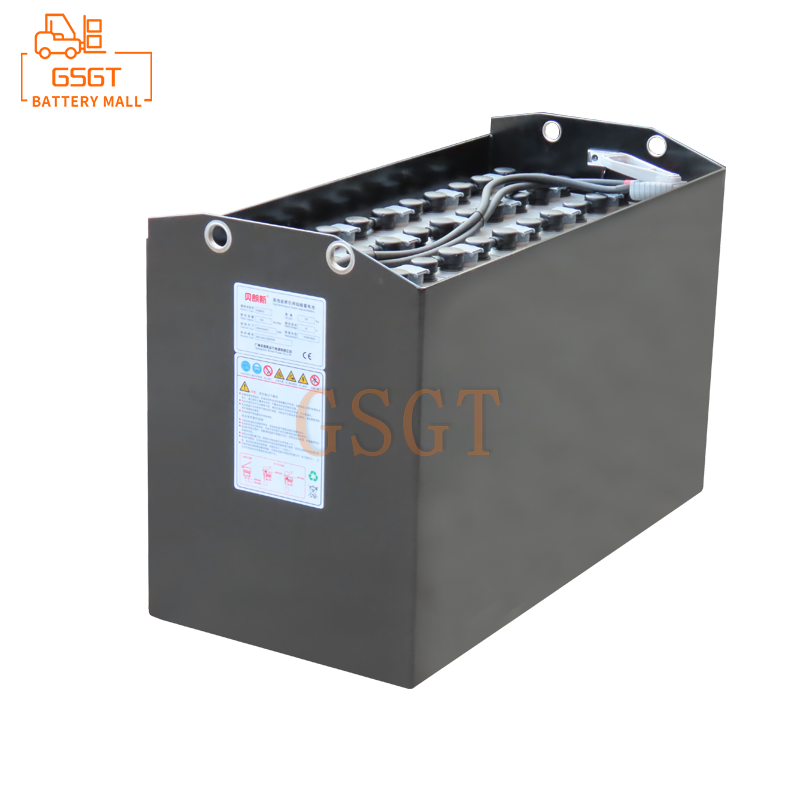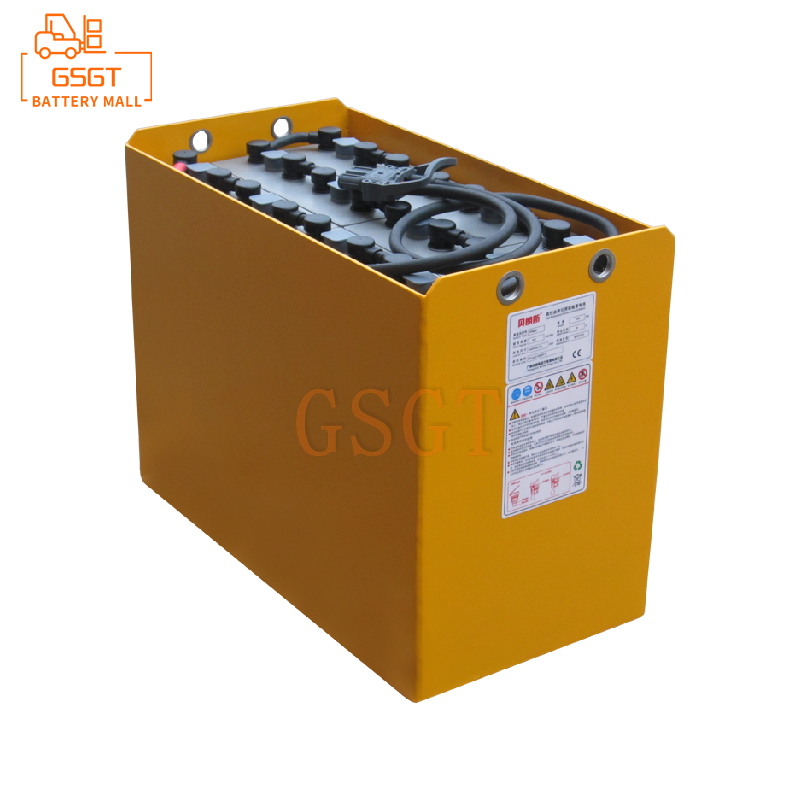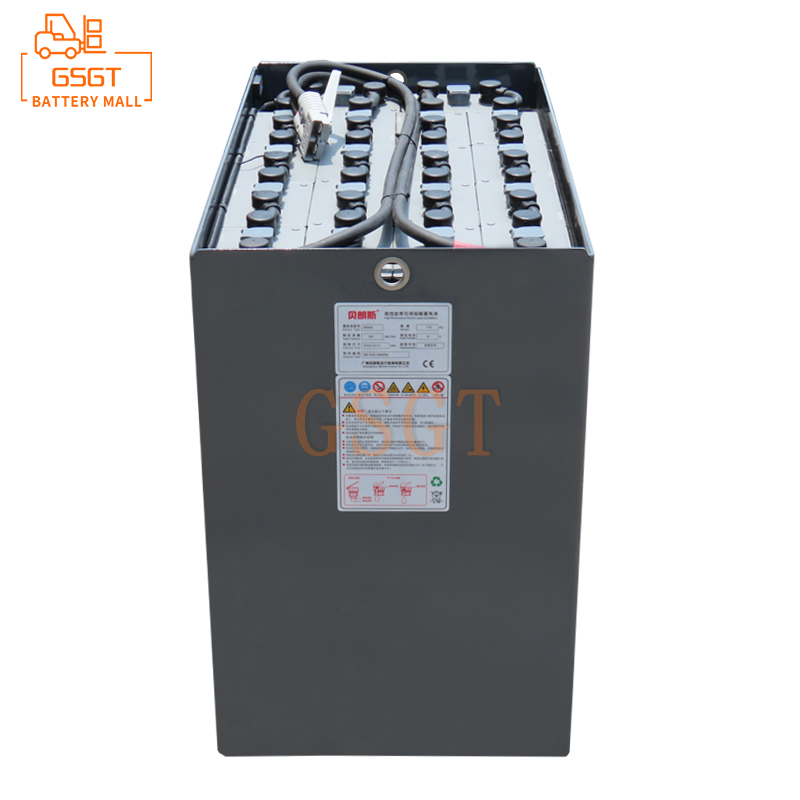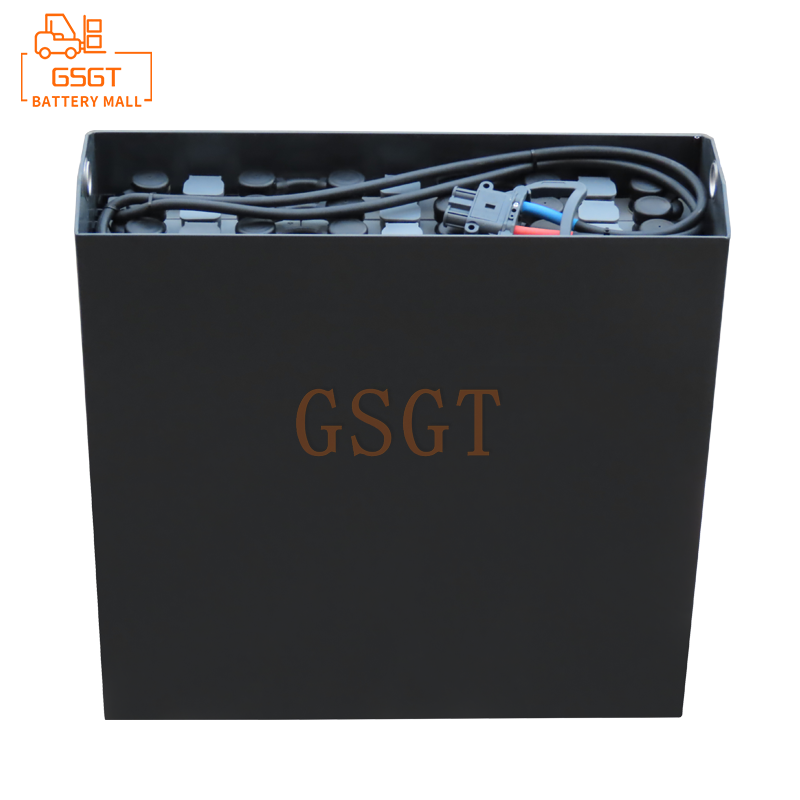Time:2025-06-16 11:12:17
Browse:594
Introduction
In the field of industrial logistics, forklifts, as important handling equipment, the reliability of their power sources is of vital importance. Lead-acid batteries occupy an important position in the power system of forklifts due to their advantages such as mature technology, low cost and large capacity. As a key device for replenishing the energy of lead-acid batteries, the good matching of the charger with the battery is the core element to ensure the efficient operation of forklifts, extend the service life of the battery and reduce operating costs. However, in practical applications, the matching of forklift lead-acid batteries with chargers involves numerous complex factors. Once the matching is inappropriate, it will cause many problems. Therefore, it is of great practical significance to deeply explore the matching points of the two.
The key factors for matching forklift lead-acid batteries with chargers
Voltage matching
1. Correspondence between the rated voltage of the battery and the output voltage of the charger : The rated voltage of forklift lead-acid batteries comes in various specifications, such as 24V, 36V, 48V, etc. This is determined by the number of individual batteries inside the battery and the connection method. The output voltage of the charger must precisely match the rated voltage of the battery. For instance, a 48V forklift lead-acid battery must use a charger with an output voltage of 48V. If the output voltage of the charger is higher than the rated voltage of the battery, the excessively high voltage will cause abnormally intense chemical reactions inside the battery, resulting in overcharging. Overcharging not only accelerates the battery's water loss, causing the electrolyte to dry up, but also leads to the shedding of active substances on the plates, significantly shortening the battery's lifespan. In severe cases, it may even cause safety accidents such as battery bulging and explosion. Conversely, if the output voltage of the charger is lower than the rated voltage of the battery, the battery will not be able to obtain sufficient energy to reach a fully charged state. Long-term undercharging will cause sulfation of the battery plates, increase resistance, and decrease capacity. The driving range and working performance of the forklift will also be seriously affected accordingly.
2. Voltage Changes during Charging and Charger Response Mechanism : During the charging process, the terminal voltage of lead-acid batteries is not constant. In the initial stage, the battery voltage is relatively low. As charging proceeds, the voltage gradually rises. When it approaches full charge, the rate of voltage increase slows down and tends to stabilize. A high-quality charger should have an intelligent voltage regulation function, capable of monitoring the battery voltage changes in real time. It should provide a higher voltage at the initial stage of charging to overcome the internal resistance of the battery and promote the rapid flow of charging current into the battery. As the battery voltage rises, the charger automatically reduces the output voltage to prevent overcharging and ensure that the charging voltage is compatible with the real-time status of the battery throughout the charging process, achieving efficient and safe charging.
Current matching
1. The influence of charging current on the charging speed and Lifespan of batteries: The magnitude of the charging current directly determines the charging speed and service life of the battery. A larger charging current can replenish energy for the battery in a relatively short period of time, but if it exceeds the range that the battery can withstand, it will cause the battery to heat up severely. Excessively high temperatures will accelerate the chemical reactions inside the battery, leading to intensified evaporation of the electrolyte and accelerated corrosion of the plates, thereby significantly shortening the battery's lifespan. On the contrary, if the charging current is too small, although it is beneficial to the battery life, the charging time will be significantly prolonged. In the working scenarios where forklifts are frequently used, this will seriously affect work efficiency. Generally speaking, the recommended charging current for forklift lead-acid batteries is 0.1C - 0.15C of their capacity.
2. Select the appropriate charging current based on the battery capacity and usage scenario: Different forklift usage scenarios have different focuses on charging time and battery life. In places where forklifts are frequently used and the work intensity is high, such as logistics warehouses, to reduce the downtime of forklifts, a larger charging current can be appropriately selected within the allowable range of the battery to achieve fast charging. However, at the same time, it is necessary to closely monitor the battery temperature and take effective heat dissipation measures. For some places with lower usage frequency and less strict requirements for charging time, such as forklifts used occasionally inside factories, a smaller charging current can be adopted to extend the battery's service life and reduce the cost of battery replacement. In addition, the degree of battery aging should also be taken into account. New batteries can withstand relatively large charging currents, while the charging current of aged batteries should be appropriately reduced
Charging mode matching
Common Charging Modes and Their Characteristics :
- Constant current charging: During the charging process, the charging current remains constant. The advantage of this charging mode is that it can quickly recharge the battery with a large current at the beginning of charging, and the charging speed is relatively fast. It is suitable for situations where the battery power is severely insufficient. However, as the battery power gradually increases, the terminal voltage of the battery keeps rising. If it is charged at a constant high current continuously, it is easy to cause overcharging in the later stage, which will cause damage to the battery.
- Constant Voltage charging: During the charging process, the output voltage of the charger remains constant. As the battery power increases, the charging current will gradually decrease. Constant voltage charging can effectively prevent overcharging. However, in the early stage of charging, due to the low battery voltage, the charging current will be too large, which may cause an impact on the battery. Moreover, in the later stage of charging, if the current is too small, the charging speed will be slow, resulting in a longer overall charging time.
- Three-stage charging : It combines the advantages of constant current charging and constant voltage charging, and is divided into three stages: constant current charging, constant voltage charging and float charging. Constant current charging is adopted in the early stage of charging to quickly replenish a large amount of power to the battery. When the battery voltage rises to a certain level, switch to constant voltage charging to prevent overcharging. Finally, it enters the float charging stage, maintaining the battery in a fully charged state with a relatively small current to compensate for the self-discharge loss of the battery and extend its service life. The three-stage charging mode can better balance the charging speed and battery life, and it is currently a commonly used mode for charging lead-acid batteries in forklifts.
2. Analysis of Applicable Charging Modes for Forklift Lead-Acid Batteries : Considering the working characteristics and usage requirements of forklift lead-acid batteries, the three-stage charging mode is the most suitable. During the operation of forklifts, the battery power consumption is relatively large. At the initial stage of charging, constant current charging can quickly restore most of the power and reduce downtime. As charging proceeds, switching to the constant voltage charging stage can effectively prevent overcharging and protect the battery. The float charging stage ensures that the battery remains fully charged during the idle period and is ready for use at any time. In addition, for some special application scenarios, such as places with high emergency charging demands, the constant current stage parameters in the three-stage charging mode can be appropriately optimized under the premise of ensuring battery safety to further increase the charging speed.
Battery characteristics and charger compatibility
1. Characteristic Differences among Different Types of lead-acid batteries : Lead-acid batteries can be classified into common open lead-acid batteries, valve-regulated sealed lead-acid batteries, and other types based on factors such as plate structure and electrolyte state. Ordinary open-type lead-acid batteries have a relatively low cost, but their maintenance is relatively complex. They require regular checks of the electrolyte level and the addition of distilled water. It will produce a large amount of gas during the charging process and has high requirements for the ventilation of the charging environment. Valve-regulated sealed lead-acid batteries have the advantages of good sealing performance, no need for regular water addition, and low gas generation, but they are relatively expensive. Different types of lead-acid batteries vary in terms of charging acceptance capacity and charging efficiency, which requires that the charger be compatible and matched with them.
2. Adaptability Requirements of Chargers for Batteries with Different Characteristics : Chargers should have a certain degree of universality and be able to meet the charging needs of different types of lead-acid batteries. For ordinary open-type lead-acid batteries, the charger needs to have good heat dissipation performance to cope with the large amount of heat generated during the charging process. At the same time, it should be able to reasonably adjust the charging parameters according to the evaporation of the electrolyte. For valve-regulated sealed lead-acid batteries, the charger must precisely control the charging voltage and current to prevent excessive internal pressure due to overcharging, which could damage the sealing structure. In addition, some advanced chargers also have battery type recognition functions, which can automatically detect the type of connected batteries and match the corresponding optimal charging parameters, improving the accuracy and safety of charging.
The influence of improper matching of forklift lead-acid batteries with chargers
The impact on the lifespan of the battery
1. Battery damage caused by overcharging: When the output voltage or current of the charger is too high, putting the battery in an overcharged state, a series of irreversible chemical reactions will occur inside the battery. Firstly, a large amount of water in the electrolyte will be electrolyzed, generating hydrogen and oxygen, which causes the electrolyte to dry up and increases the internal resistance of the battery. Meanwhile, the active substances on the plates will fall off due to excessive oxidation, reducing the effective area of the plates and significantly lowering the battery capacity. Long-term overcharging may also cause deformation of the battery plates and short circuits, ultimately making the battery unusable and greatly shortening its service life.
2. Battery performance degradation caused by undercharging: Insufficient output voltage or current from the charger leads to long-term undercharging of the battery, which prevents lead sulfate on the battery plates from being fully converted into active substances and gradually forms irreversible sulfides. After vulcanization, the resistance of the plates increases, making it difficult to accept current during charging. During discharging, the output voltage drops, and the battery capacity gradually decreases. In addition, undercharging will also intensify the voltage imbalance among the individual cells inside the battery, further accelerating battery aging and seriously affecting the overall performance and service life of the battery.
The impact on the operating performance of forklifts
1. Insufficient power and shortened driving range: If the lead-acid battery of the forklift is not properly matched with the charger, resulting in the battery not being fully charged or its performance declining, the forklift will experience insufficient power during operation. For instance, when handling heavy objects or climbing slopes, the lifting speed and traveling speed of forklifts significantly slow down, failing to meet the work requirements. At the same time, due to the reduction in battery capacity, the driving range of the forklift will also be significantly shortened, requiring more frequent charging. This not only increases the charging cost but also seriously affects the working efficiency of the forklift and the continuity of logistics operations.
2. Increased risk of electrical system failure : Mismatched chargers may cause voltage fluctuations or harmonic interference during the charging process. These abnormal electrical signals can be conducted to the forklift's electrical system through the charging lines, causing damage to electrical components such as motors and controllers. If exposed to such an unstable charging environment for a long time, the lifespan of electrical components will be significantly shortened, which can easily lead to electrical system failures, such as motor burnout and controller malfunction, causing forklifts to be unable to operate normally and increasing maintenance costs and downtime.
Potential safety hazards
1. Fire and Explosion Risk : When a forklift's lead-acid battery is overcharged, it generates a large amount of hydrogen, which is a flammable and explosive gas. When the charging environment is poorly ventilated and hydrogen accumulates to a certain concentration, it may cause an explosion and fire upon encountering an open flame or static sparks. In addition, if the charger itself has quality issues or does not match the battery, causing overheating, it may also ignite flammable materials around, resulting in serious safety accidents.
2. Electric Shock Risk : If the electrical insulation performance of the charger is poor, leakage may occur during the charging process. When operators come into contact with forklifts or chargers, they are at risk of electric shock, which endangers their personal safety. Therefore, the charger must have good insulation protection and grounding measures to ensure the safety and reliability of the charging process.
Practical application of key points for matching Forklift lead-acid batteries with chargers
Matching considerations in the forklift selection stage
1. Determine the battery and charger specifications based on the forklift's working requirements : When choosing a forklift, it is necessary to determine the appropriate lead-acid battery capacity and voltage level for the forklift based on the actual working scenario requirements, such as the weight of the goods being moved, frequency, and working hours. For instance, for forklifts that frequently perform heavy-load handling and operate for long periods of time, high-capacity and high-voltage batteries should be selected to meet their continuous power demands. At the same time, according to the specifications of the selected battery, match the charger with the corresponding output voltage and current to ensure that the two are completely matched in terms of parameters.
2.Refer to the suggestions of forklift manufacturers : Forklift manufacturers have in-depth research and practical experience in the matching of batteries and chargers when designing and manufacturing forklifts. Therefore, during the selection process, users should carefully review the product manual of the forklift and follow the manufacturer's recommended specifications and models for batteries and chargers. The matching solution recommended by the manufacturer has undergone strict testing and verification, and can ensure the performance, battery life and safety of the forklift to the greatest extent.
Matching management in daily use and maintenance
1. Regularly check the condition of the battery and charger: During the daily use of forklifts, it is necessary to regularly inspect the appearance of lead-acid batteries for any abnormal conditions such as bulges or leakage, measure parameters such as battery voltage and electrolyte density, and determine the health status of the battery. At the same time, check whether the appearance of the charger is intact, whether the cooling fan is operating normally, and whether the charging parameters are correct. Regularly maintain and service the battery and charger, such as cleaning the battery surface and checking whether the charging line connection is firm, to ensure that both are always in good working condition and maintain matching performance.
2. Correct operation of the charging process: When performing charging operations, operators should strictly follow the operating procedures. First of all, make sure the connection between the charger and the battery is correct and avoid reversing the polarity. Then, based on the remaining power of the battery and its working status, select the appropriate charging mode and parameters. During the charging process, closely monitor the temperature changes of the battery and the charger. If the temperature is found to be too high, stop charging immediately and check the cause. After the charging is completed, first disconnect the charger from the battery, then turn off the power of the charger to prevent the generation of electric sparks and potential safety accidents.

$2450

$1690

$1630

$1200

MESSAGE
Professional And Efficient
Security
Affordable Price
Professional Services